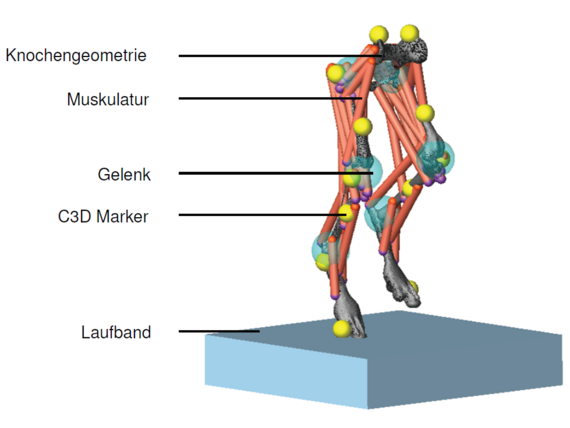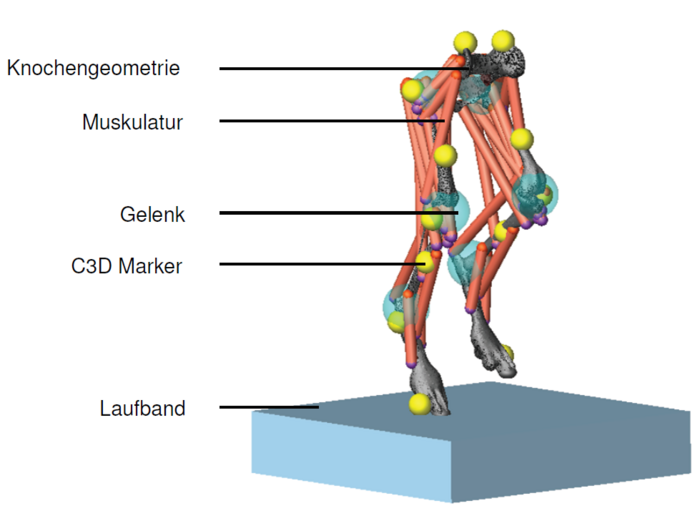Gabriele Helms, Bernd-Arno Behrens, Martin Stolorz, Patrick Wefstaedt, Ingo Nolte (2009); BioMedical Engineering Online, Volume: 8; Article number: 36.


In multi-body systems, models of the skeletal system are concatenated with the muscles. It can be used to replicate various motions of humans or even animals. Within various projects it has been used to determine the loads acting on specific areas during characteristic movements. Additionally, there is an interface with existing FEM programs. Through this interface occurring forces and moments can be directly integrated into the FEM program and used for detailed simulations. This allows a more realistic simulation and adapted design of optimised or new implants.
Publication
A multi-body simulation of the hind legs of dogs was built. The model of the hind legs was created by different methods. On the one hand, computed tomography (CT) scans of the bones were used to program the skeletal system. In order to implement the exact position and orientation of the muscles, magnetic resonance imaging (MRI) scans were also created and analysed. Kinematic and kinetic data were drawn from motion analysis of a dog on a special treadmill and implemented into the model for multi-body simulation. Once all the data were combined in the program, the resulting reaction forces from the motion in the computer program could be compared with those from the literature. Overall, this model was shown to calculate values similar to those measured in reality.



























